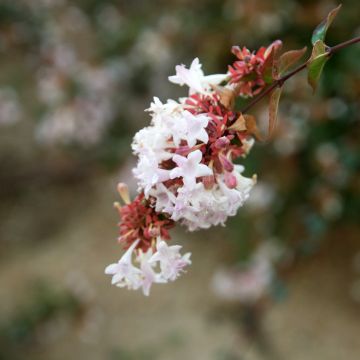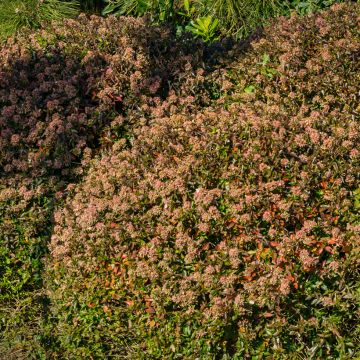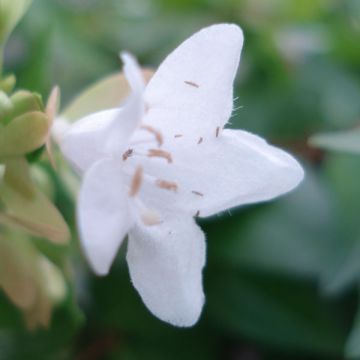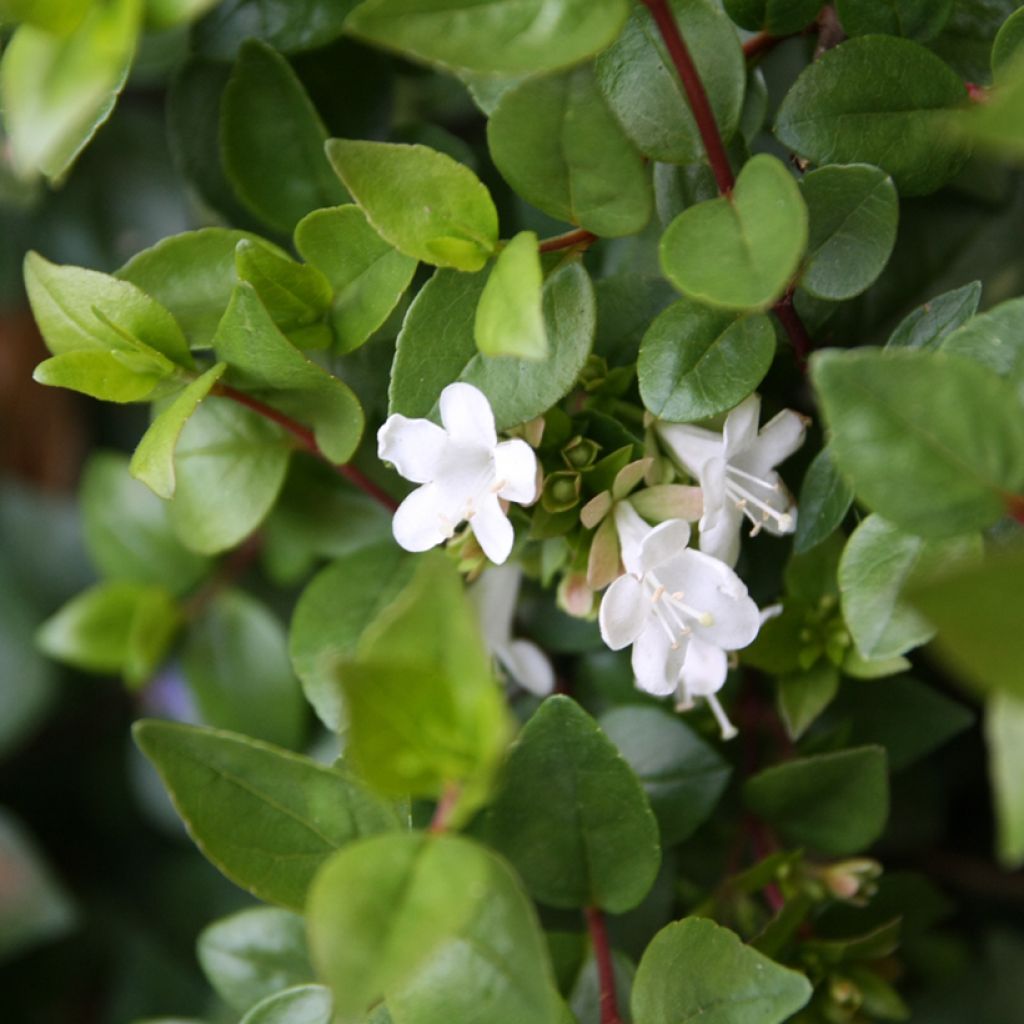

Abelia zanderi Little Richard
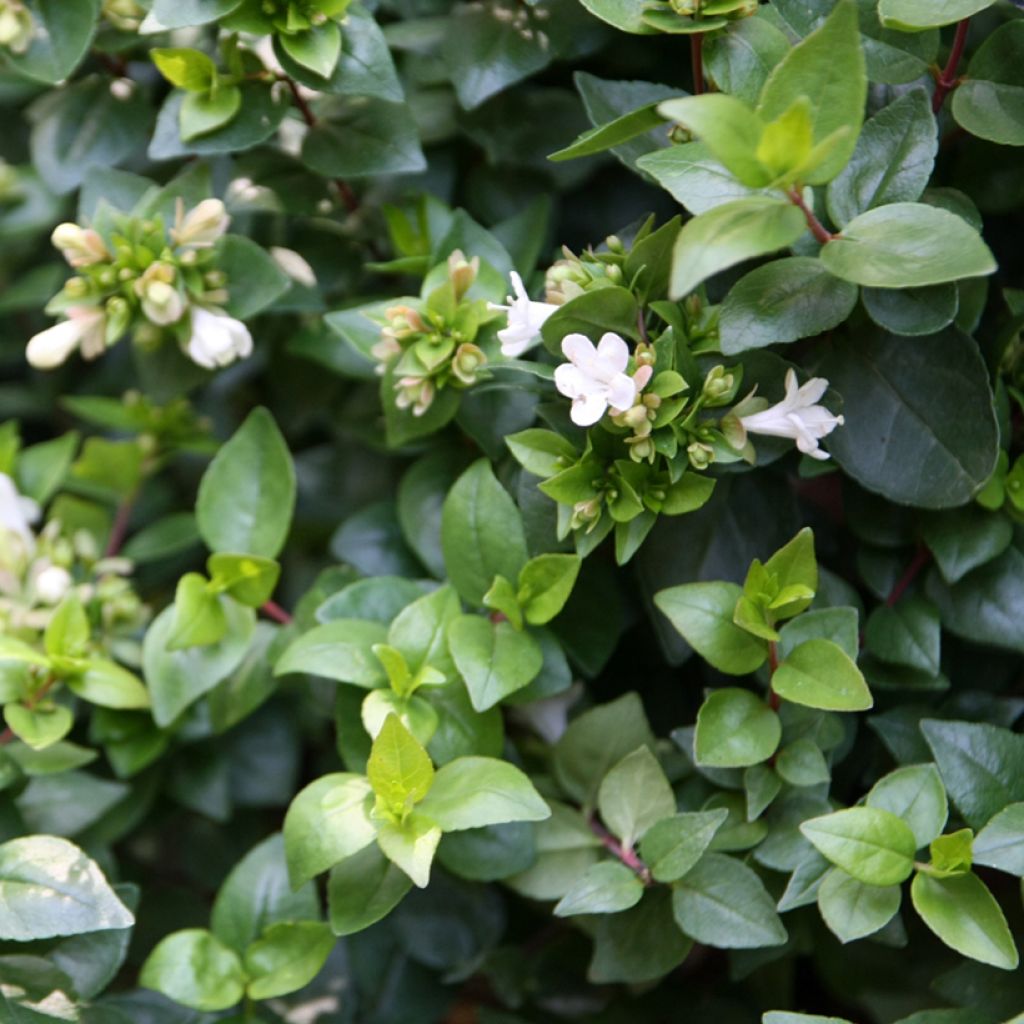

Abelia zanderi Little Richard


Abelia zanderi Little Richard


Abelia zanderi Little Richard


Abelia zanderi Little Richard
Abelia zanderi Little Richard
Abelia zanderi Little Richard ® JNOV
Plant that has developed well in width despite difficult conditions: limestone and rocky soil, heatwaves and irregular watering. A lovely and long flowering with delicate colours.
florence, 15/09/2023
This plant carries a 24 months recovery warranty
More information
We guarantee the quality of our plants for a full growing cycle, and will replace at our expense any plant that fails to recover under normal climatic and planting conditions.
From €5.90 for pickup delivery and €6.90 for home delivery
Express home delivery from €8.90.

Does this plant fit my garden?
Set up your Plantfit profile →
Description
Abelia zanderi Little Richard is a charming and relatively rare, new addition to the range of bushes suitable for small spaces and terrace decoration. It has a naturally compact, spreading, and rounded habit, and its flowering is long and abundant, consisting of small white and fragrant flowers enclosed in pink bracts. In autumn, its semi-evergreen foliage is painted with rich bronze shades and crowned with lovely old-pink bracts that persist for a long time. Easy to grow and not demanding, this beautiful bush is attractive for much of the year and is adorable in a small hedge or at the centre of a border.
Abelia zanderi Little Richard, from the caprifoliaceae family, is derived from the Abelia zanderi, a little-known hardy Chinese species with a compact and spreading habit, whose flowers are remarkably fragrant. Growing at a moderate pace, Little Richard will reach approximately 60cm (23.6in) in height and 90cm (35.4in) in spread. It develops slightly arching branches that contribute to its graceful habit. This abelia offers a long and abundant flowering that is pleasantly fragrant lasting throughout the summer, from July to September-October, when few shrubs are in bloom. Its countless small funnel-shaped corollas, 2.5cm (1in) wide, are white with a hint of pink and arranged in terminal panicles, attracting many pollinators. As the flowers fade, they give way to beautiful rust-coloured compound calyxes that are very decorative against the autumn foliage. In this Little Richard variety, the young shoots are red in spring. The slender and arching branches of the abelia bear particularly glossy, light green, semi-evergreen foliage, evergreen in mild climates. With the onset of cool nights, the foliage takes on a bronzed hue and persists for a long time on the branch.
This modest-sized Little Richard abelia, forming an adorable ball of flowers, can be planted either in groups with other small bushes, as a standalone specimen, or in a large pot. It can be planted in a perennial bed as well as a small informal or trimmed hedge. It can be paired with Syringa microphylla 'Superba', bush or groundcover roses with single flowers, or dwarf buddleias. It is well-suited for container cultivation, making it suitable for a terrace or balcony.
Report an error about the product description
Abelia zanderi Little Richard in pictures






Plant habit
Flowering
Foliage
Botanical data
Abelia
zanderi
Little Richard ® JNOV
Caprifoliaceae
Zabelia dielsii
Cultivar or hybrid
Other Abelia
Planting and care
The Little Richard Abelia thrives in sunny or partially shaded areas. Plant it in spring or early autumn in a light, rather fertile, and well-drained soil. Ideally, it should be planted in a balanced mixture of compost and garden soil. Easy to grow, it requires little maintenance. This plant is hardy (-20°C / -4°F), but protect it from heavy frosts and cold, dry winds when it is young. Between February and April, before new growth begins, prune out any diseased or dead wood and keep only the vigorous branches to maintain the bush's compact habit. It is not attacked by parasites or predators.
Planting period
Intended location
Care
-
, onOrder confirmed
Reply from on Promesse de fleurs
Hedge shrubs
Haven't found what you were looking for?
Hardiness is the lowest winter temperature a plant can endure without suffering serious damage or even dying. However, hardiness is affected by location (a sheltered area, such as a patio), protection (winter cover) and soil type (hardiness is improved by well-drained soil).

Photo Sharing Terms & Conditions
In order to encourage gardeners to interact and share their experiences, Promesse de fleurs offers various media enabling content to be uploaded onto its Site - in particular via the ‘Photo sharing’ module.
The User agrees to refrain from:
- Posting any content that is illegal, prejudicial, insulting, racist, inciteful to hatred, revisionist, contrary to public decency, that infringes on privacy or on the privacy rights of third parties, in particular the publicity rights of persons and goods, intellectual property rights, or the right to privacy.
- Submitting content on behalf of a third party;
- Impersonate the identity of a third party and/or publish any personal information about a third party;
In general, the User undertakes to refrain from any unethical behaviour.
All Content (in particular text, comments, files, images, photos, videos, creative works, etc.), which may be subject to property or intellectual property rights, image or other private rights, shall remain the property of the User, subject to the limited rights granted by the terms of the licence granted by Promesse de fleurs as stated below. Users are at liberty to publish or not to publish such Content on the Site, notably via the ‘Photo Sharing’ facility, and accept that this Content shall be made public and freely accessible, notably on the Internet.
Users further acknowledge, undertake to have ,and guarantee that they hold all necessary rights and permissions to publish such material on the Site, in particular with regard to the legislation in force pertaining to any privacy, property, intellectual property, image, or contractual rights, or rights of any other nature. By publishing such Content on the Site, Users acknowledge accepting full liability as publishers of the Content within the meaning of the law, and grant Promesse de fleurs, free of charge, an inclusive, worldwide licence for the said Content for the entire duration of its publication, including all reproduction, representation, up/downloading, displaying, performing, transmission, and storage rights.
Users also grant permission for their name to be linked to the Content and accept that this link may not always be made available.
By engaging in posting material, Users consent to their Content becoming automatically accessible on the Internet, in particular on other sites and/or blogs and/or web pages of the Promesse de fleurs site, including in particular social pages and the Promesse de fleurs catalogue.
Users may secure the removal of entrusted content free of charge by issuing a simple request via our contact form.
The flowering period indicated on our website applies to countries and regions located in USDA zone 8 (France, the United Kingdom, Ireland, the Netherlands, etc.)
It will vary according to where you live:
- In zones 9 to 10 (Italy, Spain, Greece, etc.), flowering will occur about 2 to 4 weeks earlier.
- In zones 6 to 7 (Germany, Poland, Slovenia, and lower mountainous regions), flowering will be delayed by 2 to 3 weeks.
- In zone 5 (Central Europe, Scandinavia), blooming will be delayed by 3 to 5 weeks.
In temperate climates, pruning of spring-flowering shrubs (forsythia, spireas, etc.) should be done just after flowering.
Pruning of summer-flowering shrubs (Indian Lilac, Perovskia, etc.) can be done in winter or spring.
In cold regions as well as with frost-sensitive plants, avoid pruning too early when severe frosts may still occur.
The planting period indicated on our website applies to countries and regions located in USDA zone 8 (France, United Kingdom, Ireland, Netherlands).
It will vary according to where you live:
- In Mediterranean zones (Marseille, Madrid, Milan, etc.), autumn and winter are the best planting periods.
- In continental zones (Strasbourg, Munich, Vienna, etc.), delay planting by 2 to 3 weeks in spring and bring it forward by 2 to 4 weeks in autumn.
- In mountainous regions (the Alps, Pyrenees, Carpathians, etc.), it is best to plant in late spring (May-June) or late summer (August-September).
The harvesting period indicated on our website applies to countries and regions in USDA zone 8 (France, England, Ireland, the Netherlands).
In colder areas (Scandinavia, Poland, Austria...) fruit and vegetable harvests are likely to be delayed by 3-4 weeks.
In warmer areas (Italy, Spain, Greece, etc.), harvesting will probably take place earlier, depending on weather conditions.
The sowing periods indicated on our website apply to countries and regions within USDA Zone 8 (France, UK, Ireland, Netherlands).
In colder areas (Scandinavia, Poland, Austria...), delay any outdoor sowing by 3-4 weeks, or sow under glass.
In warmer climes (Italy, Spain, Greece, etc.), bring outdoor sowing forward by a few weeks.



































